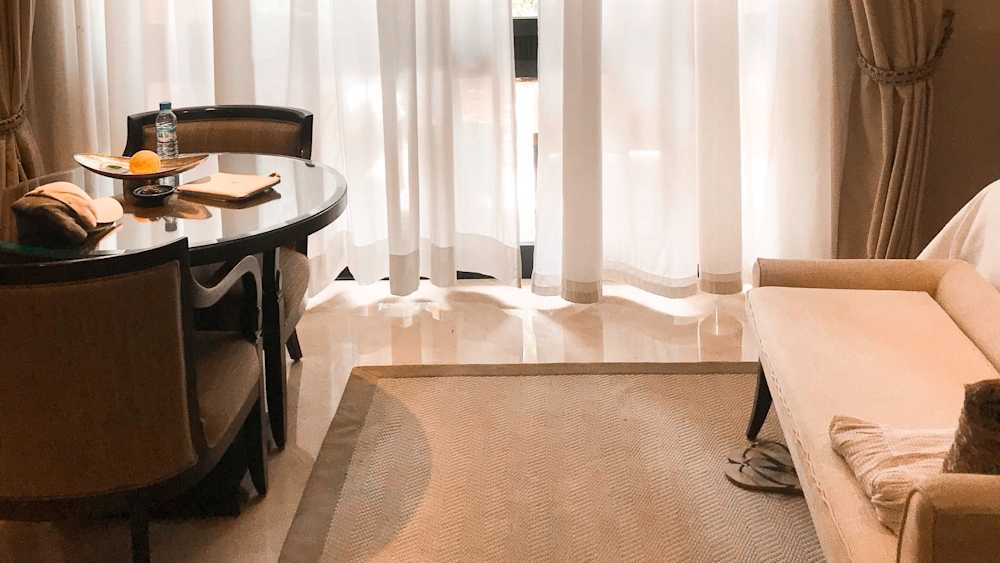Interiors play a significant role in the ignition phase of a fire. The fire safety of textiles and furnishings used in public spaces like libraries, restaurants, hotels, and hospitals thus needs to be assessed to ensure sufficient fire safety. Textile products that require testing include, for example, curtains, upholstered furniture, pillows, mattresses, and blankets.
Each European country has its own regulations or recommendations for the testing of textile products, and it can be quite a challenge to navigate among the different standards and classifications. The testing itself, on the other hand, is not complicated, as long as the material composition, product variations, and intended uses are known before testing.
Our experts are happy to assist you in preparing a testing plan for your products. You can contact us through the form at the bottom of this page, and we will start working on your project within one business day.
Common fire testing standards
Some of the most commonly used fire testing standards include the following international and national ones:
ISO 12952: Assessment of the ignitability of bedding items with smoldering cigarette or match flame equivalent
EN 1021: Ignitability of upholstered furniture
EN 1102: Burning behavior test for curtains and drapes
DIN 4102: Fire behavior of building materials and elements
EN 13501: Fire classification of construction products and building elements
Even if the last standard in the list above does not directly apply to interiors, the line between what is a building element and what is not can sometimes be a bit blurry. For example, in the case of large acoustic panels, it can be unclear whether the material is considered to be an interior or a building element, and which standard it should be tested by.
Special requirements apply to textiles intended to be used in certain contexts. For example on ships, where the number of people is large and the exit is limited, the requirements are more stringent. Some of the most common fire standards for specialty textiles and materials include the following:
IMO 2010 FTP Code: Fire test procedure for materials intended to be used on ships
EN 45545: Requirements for fire behavior of materials used in rail transport
ECE R118: Requirements for the fire behavior of materials used on buses
What characteristics are tested?
Textile fire testing is mainly focused on sensitivity to ignition and the speed of fire spread. Usually, a small flame is used as the ignition source, the size of which can be compared to the flame of a match or candle. A burning cigarette is also commonly used as an ignition source. In the test with a cigarette, the smoldering of the material is examined, i.e. flameless, usually slowly progressing combustion.
In addition to the ignition sensitivity and speed of fire spread, the formation of harmful gases and smoke, the release of heat, and other fire behavior such as dripping, melting, or sparking of the material are measured.
How are the testing conditions determined?
The key to defining the appropriate textile fire testing conditions is the intended use of the material. For example, curtains are tested vertically because that is how they are used in the interior, while mattresses and other bedding components are tested in a horizontal position. The intended use also affects what parameters are observed: for hanging curtains burning drops need to be observed, while this is not necessary when testing carpets.
The testing plan should be tailored to account for different variations of the material. For example, the different thicknesses of the same multi-layered product, like a mattress, should be tested, because the proportions of the materials can significantly affect its fire properties.
A testing expert should be consulted to ensure a sufficient (but not overly extensive) number of variations are tested. If the material can be used in several ways, like a bed cover that both lies in a horizontal position on top of the bed, but also hangs off the sides of the bed, it might be necessary to test all intended uses.
How does the use of fire-retardant agents affect the testing?
If textiles are fireproofed with chemicals, it is necessary to find out whether the product in question works for that specific material. The fire protector agent does not always have the desired effect, and in the worst case, it can even weaken the properties of the material.
The wear of the fire protection agent must also be taken into account, as well as possible cleaning and how the use of the material affects the coating. Generally, fire-retardant-treated textiles and furnishings are tested after washing or in some cases before and after washing to examine how the process affects the functioning of the agent.

